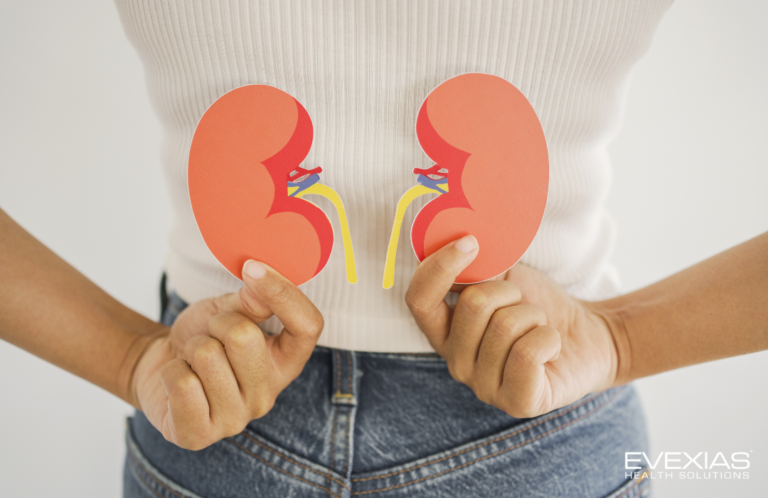Although it affects over 1.3 million Americans, rheumatoid arthritis (RA) can go undiagnosed in many people for years. For unknown reasons, RA tends to be more common in women but the symptoms are largely the same for everyone. Learning more about RA can help patients understand, receive a diagnosis, and manage the condition.
Let this be your guide to rheumatoid arthritis and its causes, symptoms, and treatments.
What is Rheumatoid Arthritis?
Rheumatoid arthritis is an autoimmune disease that destabilizes the immune system. In a healthy person, the immune system would work to fight off any infection but with rheumatoid arthritis, the immune system mistakes the cells of the joints as a threat. This means the immune system attacks the cells and makes joints feel swollen and painful.
As the immune system keeps repeating these attacks over time, the joints, cartilage, and bone can be damaged. Someone with rheumatoid arthritis may find it more difficult to use their hands or walk.
Symptoms of Rheumatoid Arthritis
For many people, the first symptoms of rheumatoid arthritis are tenderness and mild pain in the joints. Some people may mistake it for sports injuries or overuse of their joints. However, pain from RA will last the past six weeks (the usual recovery time for injuries) and get worse.
Some of the main symptoms of RA include:
- Swelling, tenderness, and pain.
- Stiffness in the morning that takes time to pass.
- Multiple joints were affected.
- The same joints were affected. For example, both hands or ankles.
- Small joints are usually the first to be affected (wrists, ankles, hands, and feet).
Symptoms of RA can come and go. Many people with RA experience flares where inflammation and pain could last days or months. Along with these symptoms also comes fatigue and sometimes a mild fever.
Causes of Rheumatoid Arthritis
Researchers have no evidence of what causes rheumatoid arthritis. However, some believe that it is triggered by something in the genes that are uniquely affected by environmental factors, bacteria, or stress (physical and emotional). So, what increases your risk of getting RA?
Risk Factors
The largest risk is in your genealogy. You’re more likely to have RA yourself if a member of your family has/had it. If you have this gene in your family, you’re more atrisk if you’re a smoker or obese.
Women are more at risk than men, often noticing symptoms in their 30’s to 60’s. However, symptoms of RA can start at any age. Women who have never given birth are also at higher risk of RA, whereas women who have given birth and breastfeed are at a lower risk.
Some studies have shown that children whose mothers smoked were at higher risk of developing RA in adulthood and children who came from lower-income families were also at higher risk.
Complications of Rheumatoid Arthritis
Someone with rheumatoid arthritis may have a lower quality of life. The pain and fatigue can be debilitating, and many people find themselves disabled. One of the most common complications of RA is premature heart disease.
Doctors often prescribe treatments for heart disease alongside treatments for rheumatoid arthritis and advise patients to stop smoking and lose weight if necessary. People with RA who are obese often experience fewer benefits from their prescribed RA medication.
For many people with RA, keeping employment can be difficult. As the condition worsens, it can make working long hours a challenge, especially in physically demanding jobs. Flexible jobs and roles are often needed for anyone suffering from the symptoms of RA.
What Happens in a Joint Affected by Rheumatoid Arthritis?
The tissue in the lining of the joint is repeatedly attacked by the immune system. This leads to swelling, pain, and sometimes the inability to use that joint. Over time this can become worse.
In addition to pain and inflammation, the joint can become deformed or cause a lack of balance. For instance, feet, ankles, or knee joints may make it difficult to walk which could result in the use of a wheelchair.
Diagnosis of Rheumatoid Arthritis
If you experience any symptoms of RA, it’s wise to visit your doctor as soon as possible. If rheumatoid arthritis is caught within the first six months there’s a better chance of slowing its progression. Diagnosis is usually made through discussion of symptoms, physical examination, and x-rays.
In some cases, lab tests may be required. Your doctor will discuss your results and your treatment options with you.
Treatment of Rheumatoid Arthritis
You must talk to your doctor about how to treat rheumatoid arthritis. Along with prescribing medications, your doctor will be able to advise on how to self-manage your symptoms. The medication given aims to slow progression and avoid joint deformity.
Known as disease-modifying antirheumatic drugs (DMARDs), these drugs are prescribed by doctors according to the severity of your symptoms. To manage your symptoms in addition to your medication, there are specific management strategies shown to RA patients to achieve the best quality of life.
Hormone Balance and Rheumatoid Arthritis
Some research has suggested that there is a direct link between female hormonal balance and RA. Women with normal hormone levels appear to be at less risk of developing the condition. Similarly, women with RA reported fewer symptoms during pregnancy or the postovulatory part of their cycle.
As women age, reproductive hormones decrease which puts women at greater risk of RA during menopause. Some doctors believe that HRT (hormone replacement therapy) could work as well for RA as it does for the symptoms of menopause.
The highly trained practitioners of EVEXIAS Health Solutions can help you find the balance you need. Hormonal balance is important for overall health at any age and can help to address the root of conditions like RA. Why not take a look at the hormonal replacement treatment options that are available to you?







